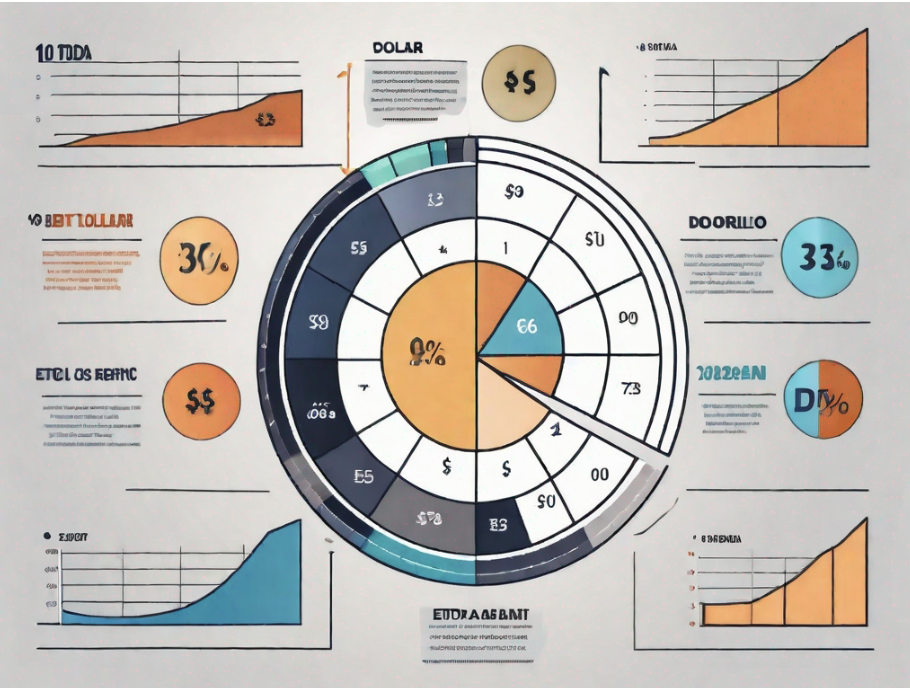What are specifics in GAAP accounting for Insurance Companies?
What are specifics in GAAP accounting for insurance companies.
Learn about accounting for insurance companies and understand the rules and regulations that apply to this industry.

In the world of finance, accounting plays a crucial role in ensuring the accuracy and transparency of financial information. For insurance companies specifically, there are certain specifics to consider when it comes to accounting practices. This article aims to provide an overview of GAAP (Generally Accepted Accounting Principles) accounting for insurance companies and delve into the various aspects that make it unique.

Overview of GAAP Accounting for Insurance Companies
Overview of GAAP Accounting for Insurance Companies
GAAP accounting for insurance companies involves the application of specific accounting standards tailored to the insurance industry. These standards are designed to provide clear guidelines on how insurance companies should record, measure, and disclose their financial transactions and activities. By following GAAP, insurance companies can maintain consistency, comparability, and transparency in their financial reporting.
One important aspect of GAAP accounting for insurance companies is the recognition and measurement of insurance contracts. Insurance companies enter into various types of contracts, such as property and casualty insurance, life insurance, and health insurance. GAAP provides guidance on how insurance companies should determine the appropriate accounting treatment for these contracts.
For example, under GAAP, insurance companies are required to recognize the revenue from insurance contracts over the period of coverage. This means that the premiums received from policyholders are not immediately recognized as revenue, but rather spread out over the duration of the insurance policy. This ensures that the revenue is matched with the corresponding expenses incurred by the insurance company in providing coverage.
In addition to revenue recognition, GAAP also provides guidance on the measurement of insurance liabilities. Insurance companies must predict future claims and benefits, and save money to cover these costs. The estimation of these liabilities involves complex actuarial calculations and requires insurance companies to make assumptions about future events, such as mortality rates, accident rates, and medical costs.
Furthermore, GAAP accounting for insurance companies also addresses the disclosure requirements for financial statements. Insurance companies are required to provide detailed information about their insurance contracts. This information includes coverage types, contract terms, and the risks associated with the insurance industry. This information is crucial for investors, regulators, and other stakeholders to assess the financial position and performance of insurance companies.
It is worth noting that GAAP accounting for insurance companies is not static and is subject to ongoing changes and updates. The Financial Accounting Standards Board (FASB) regularly reviews and updates the accounting standards for insurance companies to ensure that they remain relevant and reflect the evolving nature of the insurance industry.
Accounting standards play a crucial role in ensuring that insurance companies present accurate and transparent financial information. These standards cover various aspects of accounting, including revenue recognition, measurement of assets and liabilities, and disclosure requirements. By complying with these standards, insurance companies can provide stakeholders with a clear understanding of their financial position and performance, fostering trust and confidence in the industry.

Accounting Standards for Insurance Companies
Accounting Standards for Insurance Companies
Insurance companies are subject to accounting standards set by regulatory bodies such as the Financial Accounting Standards Board (FASB) in the United States. These standards govern various aspects of accounting, including revenue recognition, measurement of assets and liabilities, and disclosure requirements. Compliance with these standards ensures that financial statements accurately represent the financial position and performance of insurance companies.
One of the key accounting standards that insurance companies must adhere to is revenue recognition. This standard outlines the criteria for recognizing revenue from insurance policies. Insurance companies must evaluate when they can recognize revenue, considering factors like premium payment timing and insured events happening. This ensures that revenue is recognized in a manner that reflects the economic substance of the insurance contract.
In addition to revenue recognition, accounting standards for insurance companies also address the measurement of assets and liabilities. Insurance companies hold a significant amount of assets, such as investments and policyholder receivables, which need to be valued accurately. These standards provide guidance on how to measure these assets at fair value, taking into consideration market conditions and other relevant factors. Similarly, liabilities, such as claims reserves and policyholder liabilities, need to be estimated and reported in accordance with the accounting standards to reflect the potential obligations of the insurance company.
Disclosure requirements are another important aspect of accounting standards for insurance companies. These rules make sure insurance companies give enough details in their financial statements so people can understand what they do. This includes disclosing information about significant accounting policies, risk exposures, and the impact of insurance contracts on the financial statements. By providing transparent and comprehensive disclosures, insurance companies enhance the usefulness and reliability of their financial statements.
It is worth noting that accounting standards for insurance companies are not static and may evolve over time. Regulatory bodies continuously review and update these standards to address emerging issues and align with international accounting standards. This ensures that insurance companies keep pace with changing business practices and provide relevant and reliable financial information to stakeholders.
How GAAP Accounting Differs from Other Types of Accounting for Insurance Companies
How GAAP Accounting Differs from Other Types of Accounting for Insurance Companies
One of the key differences FACTORS for insurance companies is the recognition of insurance contracts as unique assets and liabilities. Under GAAP, insurance contracts are classified as either short-term or long-term, depending on their duration. This classification is crucial for accurately measuring and reporting the financial position of insurance companies, as it allows for a more comprehensive assessment of their obligations and potential future claims.
In addition to the classification of insurance contracts, GAAP accounting also requires insurance companies to estimate and record the value of future claims and premiums. This process, known as actuarial valuation, involves complex calculations based on historical data, statistical models, and assumptions about future events. By incorporating actuarial valuation into their financial statements, insurance companies can provide a more accurate representation of their financial performance and potential risks.
Furthermore, GAAP accounting for insurance companies includes specific guidelines for revenue recognition. Unlike other types of accounting, where revenue is typically recognized when goods are delivered or services are rendered, insurance companies follow a different approach. Under GAAP, insurance companies recognize revenue from insurance premiums over the policy period, reflecting the time value of money and the expected occurrence of claims.
Another important aspect of GAAP accounting for insurance companies is the treatment of investment income. Insurance companies often invest the premiums they collect from policyholders to generate additional income. GAAP requires insurance companies to report investment income separately from underwriting income, providing a clearer picture of the company’s overall financial performance.
Moreover, GAAP accounting for insurance companies includes specific disclosure requirements to enhance transparency and provide users of financial statements with relevant information. These disclosures may include details about the nature and extent of insurance risks, the methods used to estimate liabilities, and the sensitivity of financial results to changes in key assumptions.
Overall, GAAP accounting for insurance companies recognizes the unique characteristics and risks associated with the insurance industry, providing a comprehensive framework for accurate financial reporting. By adhering to these specific rules and principles, insurance companies can ensure transparency, comparability, and reliability in their financial statements, enabling stakeholders to make informed decisions.

The Impact of GAAP Accounting on Financial Statements for Insurance Companies
The Impact of GAAP Accounting on Financial Statements for Insurance Companies
GAAP accounting has a significant impact on the financial statements of insurance companies. It ensures that revenues from insurance premiums are recognized over the policy period, reflecting the timing of the insurance coverage. This approach provides a more accurate representation of the company’s financial performance and helps stakeholders make informed decisions.
Under GAAP accounting, insurance companies are required to follow specific guidelines when recognizing revenue from insurance premiums. Instead of recognizing the entire premium as revenue at the time of collection, GAAP requires insurance companies to allocate the revenue over the policy period. This means that the revenue is recognized gradually, reflecting the timing of the insurance coverage provided to the policyholders.
By recognizing revenue over the policy period, insurance companies can provide a more accurate depiction of their financial performance. This approach aligns the recognition of revenue with the delivery of insurance services, giving stakeholders a clearer understanding of the company’s profitability over time.
In addition to revenue recognition, GAAP accounting also requires insurance companies to establish loss reserves. Loss reserves are provisions set aside to cover potential losses from future claims. These reserves reflect the estimated amount needed to settle claims that have been incurred but not yet reported, as well as claims that have been reported but not yet settled.
The establishment of loss reserves is crucial for insurance companies as it helps them maintain financial stability and solvency. By setting aside funds to cover potential losses, insurance companies ensure that they have the necessary resources to fulfill their obligations to policyholders. This provision also helps protect the interests of policyholders by ensuring that the company can meet its future claim obligations.
GAAP accounting requires insurance companies to regularly assess the adequacy of their loss reserves. This involves analyzing historical claims data, current economic conditions, and other relevant factors to estimate the potential liabilities. By conducting regular assessments, insurance companies can adjust their loss reserves to reflect changes in the risk landscape and ensure that they are adequately prepared for potential claims.
Overall, GAAP accounting plays a critical role in shaping the financial statements of insurance companies. It ensures that revenues from insurance premiums are recognized over the policy period, reflecting the timing of the insurance coverage. GAAP accounting for insurance companies includes setting aside money for future claims, known as loss reserves, to cover potential losses. These provisions directly influence the profitability, solvency, and stability of insurance companies, providing stakeholders with a comprehensive view of the company’s financial health.
Our The Dostoyevsky Package is designed to provide monthly bookkeeping + controller services to small businesses and startups and organize financials for family offices and small business projects to streamline business processes. With our services, you can Elevate Your Financial Strategy and Empower Your Accounting.


Recognition of Assets and Liabilities in GAAP Accounting for Insurance Companies
Recognition of Assets and Liabilities in GAAP Accounting for Insurance Companies
GAAP accounting for insurance companies entails careful recognition and measurement of assets and liabilities. Intangible assets such as insurance contracts are recognized as assets, reflecting the value of future cash flows expected from premiums and investment income. On the liability side, insurance companies are required to establish reserves for anticipated claims and other obligations, ensuring that the financial statements accurately portray the potential liabilities.
When it comes to recognizing and measuring assets in GAAP accounting for insurance companies, there are several key considerations. One of the most important is the recognition of insurance contracts as intangible assets. Insurance companies rely on these contracts to generate future cash flows from premiums and investment income.
Insurance contracts are recognized as assets because they have a measurable value. This value is determined by estimating the future cash flows that will be generated from the contract. The estimation process takes into account factors such as the expected duration of the contract, the likelihood of claims being made, and the potential investment income that can be earned from the premiums collected.
Once the value of the insurance contract is determined, it is recorded as an asset on the balance sheet. This allows the insurance company to reflect the potential economic benefits that will be derived from the contract in its financial statements. It also provides valuable information to investors and other stakeholders about the company’s ability to generate future cash flows.
On the liability side of the balance sheet, insurance companies are required to establish reserves for anticipated claims and other obligations. These reserves represent the potential liabilities that the company may have to pay out in the future. By establishing reserves, insurance companies ensure that their financial statements accurately reflect the potential costs associated with their insurance policies.
The process of establishing reserves involves careful analysis and estimation. Insurance companies consider factors such as historical claims experience, industry trends, and regulatory requirements to determine the appropriate level of reserves. These reserves are then recorded as liabilities on the balance sheet, providing a clear picture of the potential obligations that the company may have to fulfill.

Understanding the Rules of Measurement and Disclosures for Insurance Companies
Understanding the Rules of Measurement and Disclosures for Insurance Companies
Accurate measurement of insurance transactions and subsequent disclosures are crucial in GAAP accounting for insurance companies. Insurance contracts are measured based on the expected cash flows, incorporating actuarial assumptions and estimates to determine the present value of future obligations.
When it comes to measuring insurance transactions, insurance companies take into account various factors such as the probability of claims occurring, the timing of those claims, and the amount of money that will be paid out. Actuarial assumptions are important as they help predict the chances of events happening and the costs involved.
Actuaries, who are highly skilled professionals specializing in risk assessment and statistical analysis, play a crucial role in the measurement of insurance transactions. They use mathematical models and statistical techniques to analyze historical data, predict future events, and estimate the financial impact of potential claims. These estimates are then used to calculate the present value of future obligations, which is an essential aspect of measuring insurance contracts.
In addition to actuarial assumptions, insurance companies also consider other factors such as inflation, investment returns, and policyholder behavior when measuring insurance transactions. These factors can have a significant impact on the expected cash flows and the overall financial position of the insurance company.
Once insurance contracts are measured, insurance companies are required to provide detailed disclosures regarding their insurance operations. These disclosures are essential for stakeholders, including investors, regulators, and policyholders, as they provide transparency and insight into the company’s financial position and risk exposure.
Insurance companies must disclose information about the types of insurance policies they sell, including details about the coverage, premiums, and terms and conditions. This information helps stakeholders understand the nature of the insurance business and the risks associated with different types of policies.
Furthermore, insurance companies are also required to disclose their claims experience, including the number of claims filed, the amount of money paid out in claims, and the reserves set aside for future claims. This information allows stakeholders to assess the company’s ability to manage claims and its financial stability.
Reinsurance, which is the practice of transferring a portion of the insurance risk to another insurer, is another important aspect of insurance operations. Insurance companies must disclose information about the amounts reinsured, the terms of the reinsurance agreements, and the financial impact of reinsurance on their overall risk exposure.
Lastly, insurance companies must disclose any significant risks they face, such as catastrophic events, regulatory changes, or changes in economic conditions. These disclosures help stakeholders understand the potential risks that could impact the company’s financial performance and stability.
Understand the main principles of GAAP
Understanding the Rules of Measurement and Disclosures for Insurance Companies
Generally Accepted Accounting Principles (GAAP) are anchored in four fundamental accounting principles that form the foundation for consistent and reliable financial reporting. These principles guide the preparation of financial statements, ensuring uniformity and comparability across different entities. The four primary principles of GAAP are as follows:
Principle of Materiality:
The Principle of Materiality recognizes the significance of certain information in influencing the decisions of financial statement users. This principle allows companies to focus on reporting material information, ensuring that financial statements are not burdened with immaterial details, and enabling stakeholders to concentrate on relevant data impacting decision-making.
Principle of Periodicity:
The Principle of Periodicity emphasizes the need to evenly distribute financial events over distinct and regular periods. This ensures that financial statements accurately reflect an entity’s performance and position over specific time intervals. Regular reporting intervals facilitate systematic analysis and decision-making.
Principle of Objectivity:
The Principle of Objectivity underscores the importance of relying on unbiased and reliable evidence when preparing financial statements. Objectivity ensures that financial information is free from personal bias, providing a more accurate representation of the economic reality of transactions and events.
Principle of Revenue Recognition:
The Principle of Revenue Recognition outlines the criteria for recognizing revenue in financial statements. Revenue is generally recognized when it is realized or realizable and earned. This principle ensures that revenue is recorded in the appropriate accounting period, aligning with the matching principle.
Principle of Regularity:
The Principle of Regularity stipulates that companies must adhere to established laws and regulations governing financial reporting. This principle emphasizes the importance of complying with legal requirements and ensures that financial statements accurately reflect the financial position and performance of an entity in accordance with applicable laws and regulations.
Principle of Consistency:
The Principle of Consistency requires companies to use the same accounting methods and principles consistently from one accounting period to the next. This ensures that financial statements are comparable over time, facilitating meaningful analysis and interpretation. Any changes in accounting methods should be disclosed and explained to maintain transparency.
Principle of Sincerity (or Matching Principle):
The Principle of Sincerity, also known as the Matching Principle, dictates that expenses should be matched with the revenues they help to generate. This principle ensures that the recognition of expenses is aligned with the recognition of associated revenues, promoting a more accurate representation of an entity’s profitability in a given accounting period.
Principle of Prudence (or Conservatism):
The Principle of Prudence, or Conservatism, advises accountants to choose methods and estimates that result in lower profits and lower asset values when faced with uncertainty. This principle encourages a conservative approach to financial reporting, prioritizing prudence in recognizing losses and exercising caution to avoid overstating financial performance or the value of assets.
These four principles collectively provide a framework that fosters consistency, accuracy, and reliability in financial reporting, allowing stakeholders to make informed decisions based on trustworthy information. Adherence to these principles enhances the overall
The Role of Reinsurance in GAAP Accounting for Insurance Companies
The Role of Reinsurance in GAAP Accounting for Insurance Companies
Reinsurance plays a vital role in GAAP accounting for insurance companies. It allows insurance companies to transfer portions of their risks and liabilities to other insurers, thereby reducing their exposure. In GAAP accounting, reinsurance transactions must be appropriately recorded and disclosed, reflecting the impact of reinsurance contracts on the financial statements. Failure to account for reinsurance properly can distort the financial position and performance of insurance companies.
Accounting for Unearned Premiums in GAAP Accounting for Insurance Companies
Accounting for Unearned Premiums in GAAP Accounting for Insurance Companies
Unearned premiums are a significant element of insurance contracts, representing the portion of the premiums that insurance companies have not yet earned. GAAP accounting requires insurance companies to defer the recognition of unearned premiums until the related coverage period has expired. This ensures that the revenue recognition aligns with the provision of insurance services, accurately reflecting the financial position and performance of insurance companies.
Accounting for Loss Reserves in GAAP Accounting for Insurance Companies
Accounting for Loss Reserves in GAAP Accounting for Insurance Companies
Loss reserves are a critical accounting aspect for insurance companies, serving as a provision for future claims expenses. GAAP accounting requires insurance companies to establish loss reserves based on actuarial methods and assumptions to estimate the ultimate payout associated with incurred claims. The establishment and subsequent adjustments of loss reserves impact the profitability and financial stability of insurance companies, helping to ensure they maintain sufficient capital to cover potential claims.
Disclosure Requirements for Insurance Companies under GAAP Accounting
Disclosure Requirements for Insurance Companies under GAAP Accounting
Under GAAP accounting, insurance companies have disclosure obligations to provide sufficient information to users of financial statements. These disclosures typically include information on significant insurance policies, claim reserves, reinsurance arrangements, and other related party transactions. By disclosing relevant information, insurance companies enhance transparency, enabling stakeholders to make informed decisions based on a comprehensive understanding of the company’s operations and financial condition.

Conclusion
GAAP accounting for insurance companies embodies specific principles, guidelines, and disclosure requirements tailored to the distinctive nature of the insurance industry. Accounting rules assist insurance companies in monitoring their financial activities. These rules enable stakeholders to comprehend the company’s financial performance. By adhering to GAAP accounting, insurance companies can maintain consistency, comparability, and transparency, instilling confidence in stakeholders and contributing to the overall stability of the insurance industry.
It All Starts With a FREE consultation!
Every client’s needs are unique and require varying amounts of time and attention. You can use this form to let us know what you’re looking for, and we’ll reach out to you to schedule an appointment and talk about rates for your business needs.
Please be as detailed as possible with what work is needed, what industry your business is in, and where you are located.
Our team will contact you with in 2 business days to set up the first meeting. We will make sure all your needs are taken into account when selecting the package and type of services you need.





Stay In Touch